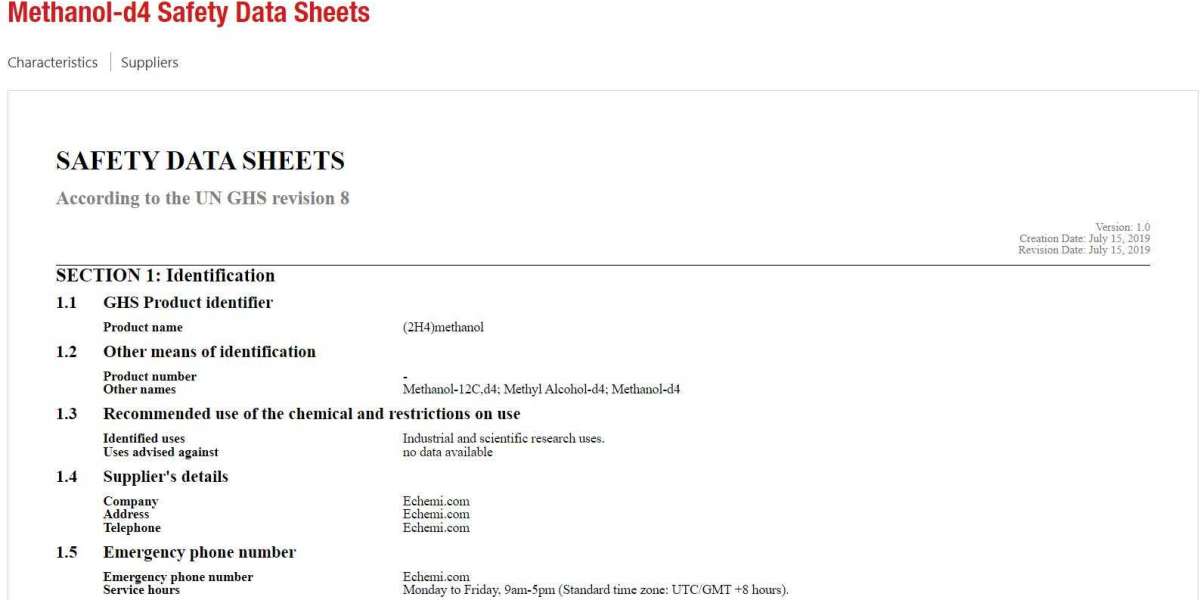The adverse effects of methanol poisoning on health will not appear until 1 to 72 hours after the asymptomatic period.
Effects of short-term (less than 8 hours) exposure: The toxicity of methanol is due to its metabolites. The by-products of methanol metabolism can lead to acid accumulation in the blood (metabolic acidosis), blindness and death. The initial adverse effects of methanol poisoning on health include drowsiness, decreased level of consciousness (inhibition of central nervous system), confusion, headache, dizziness and inability to coordinate muscle movements (ataxia). Other adverse health effects include nausea, vomiting, heart and respiratory failure. Patients with coma, epilepsy and severe metabolic acidosis (pH7) have poor prognosis. In the early stage after exposure to methanol, the adverse effects on health may be relatively small. This does not mean that the toxicity is insignificant. The toxicity of methanol worsens with the increase of the degree of metabolic acidosis, so it becomes more serious with the increase of the time between exposure and treatment.
Eye contact:
Irritation, redness and pain.
Ingestion exposure:
Methanol intake can cause extensive adverse health effects:
Neurology: headache, dizziness, agitation, acute mania, amnesia, decreased consciousness level (including coma) and epilepsy.
Gastrointestinal: nausea, vomiting, anorexia (anorexia), severe abdominal pain, gastrointestinal bleeding (bleeding), diarrhea, liver dysfunction, pancreatitis (pancreatitis).
Ophthalmology: visual impairment, blurred vision, sensitivity to light (photophobia), visual hallucinations (blurred vision, skin on the eyes, snowstorm, dancing spots, flash), partial or total loss of vision, few eye pain. Visual inspection can find abnormalities. Pupil enlargement is a sign of severe exposure to methanol.
Others: electrolyte imbalance. Renal failure, blood in urine (hematuria) and muscle death at cell level (rhabdomyolysis) have been reported in severe poisoning. Fatal cases are usually characterized by fast heart rate (tachycardia) or slow heart rate (bradycardia) and increased respiratory rate. When hypotension (hypotension) and respiratory arrest occur, death is imminent.
The initial treatment is mainly to support respiratory and cardiovascular functions. The goal of treatment is to prevent methanol from being converted into toxic metabolites, or quickly remove toxic metabolites, and correct metabolic and fluid abnormalities.
Antidote: mepyrazole and ethanol are effective antidotes for methanol poisoning. Once the patient/victim is sent to the medical institution, Fomepizole or ethanol should be given as soon as possible. See long-term impact: further guidance for medical treatment.
Medical treatment: The antidote enpyrazole or ethanol should be injected intravenously as soon as possible to block the conversion of methanol to formic acid and prevent acidosis. The efficacy and safety of fopyrazole have been confirmed, and the treatment dose is easy to maintain, so it is the first choice. Once the patient/victim has an acid reaction, it may not be beneficial to give Nanpyrazole or ethanol, but it can be decided by the attending doctor. Hemodialysis is the most effective treatment for acidosis patients/victims. Folic acid (folic acid) should also be injected intravenously to improve the rate of formate metabolism into less toxic chemicals.
Delayed effect of exposure: The most common permanent adverse health effect after severe methanol poisoning is nerve damage or death (optic neuropathy or atrophy) from eyes to brain, leading to blindness; Diseases caused by damage to specific areas of the brain, resulting in difficulty in walking and movement (Parkinson's disease); Brain damage caused by exposure to toxins leads to abnormal thinking (encephalopathy); And damage to the peripheral nervous system.
Effects of long-term or repeated exposure: methanol is not suspected to be a carcinogen. Long-term or repeated exposure to methanol is suspected to be a developmental toxicity risk. It is not clear whether long-term or repeated exposure to methanol will cause reproductive toxicity risk. Methanol may cause congenital defects in human central nervous system. Chronic poisoning caused by repeated exposure to methanol vapor can cause eye inflammation (conjunctivitis), recurrent headache, dizziness, insomnia, stomach disease and visual impairment. The most significant impact of long-term exposure to low level methanol on health is the extensive impact on eyes. Inflammatory changes and skin irritation (dermatitis), chronic or repeated exposure to methanol.



